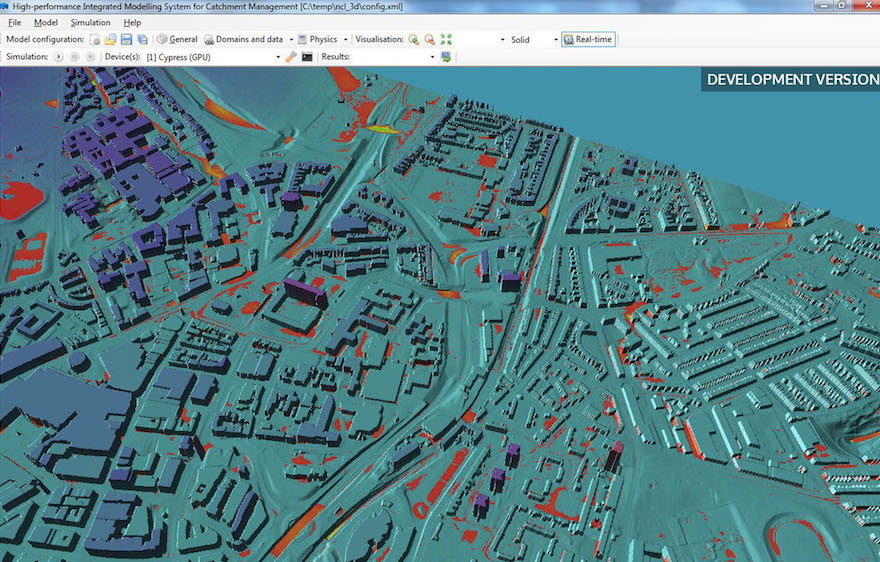A tool to create near real-time flood risk assessments of individual properties, using LiDAR data and oblique aerial photography from Bluesky, has been developed by Newcastle University.
The project will use artificial intelligence to extract information from other datasets, including old reports and flood asset registers, and bring this together with weather and traffic sensors to provide a dynamic online platform for hyper local, near real-time flood risk assessments.
Data from aerial mapping specialist Bluesky enables visualisations of evolving events that will enable flood risk managers to employ just-in-time maintenance and alleviation methods, such as clearing blocked drains or setting up mobile defences.
“In 2012 Newcastle experienced the worst flooding in living memory,” said Dr Luke Smith, lecturer in data-centric civil engineering and deputy director of the Urban Observatory at Newcastle University. “This exposed a number of weaknesses in our existing flood modelling. We are, it would appear, incredibly good at predicting what roads will flood, but not always its consequences for infrastructure, transport, and individual homes.
“The Bluesky MetroVista data combines LiDAR and photogrammetry, providing accuracy and detail that enable us to include information that is simply not available from a single source,” he continued. “For example, as part of this project we will consider the impact of property age and type of construction, we can look at the permeability of a house’s front garden and sometimes even door thresholds – all important considerations in flood risk assessment and mitigation at this scale.”
The Bluesky MetroVista imagery collection includes simultaneously captured oblique and vertical aerial photography. The MetroVista datasets also include geographically accurate, phototextured, mesh models ready for use in 3D GIS, CAD and other modelling software as well as visualisation, gaming and Virtual Reality workflows.
Known as the PYRAMID (Platform for dYnamic, hyper-resolution, near-real time flood Risk AssessMent Integrating repurposed and novel Data sources), the Newcastle Unibversity project will use new information from a range of sensors deployed as part of the University’s Urban Observatory. The project will also use AI and machine learning to automatically extract information from other data sources.
Main picture: Aerial view of central Newcastle and Gateshead, which were affected by the 2012 flooding.

A screengrab showing flood risk in Newcastle











